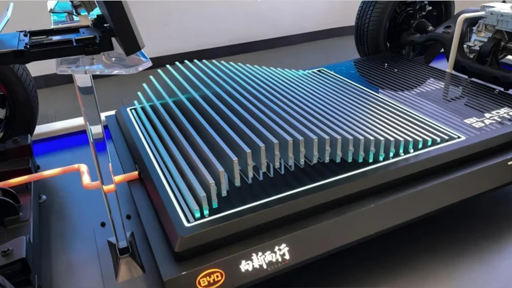Does this burning at 200 j/g really mean it would be a lot safer or do you chalk this up to be company propaganda. Clearly it is a lot lower than gasoline, but since 600-900 proved to still be an issue, could this be enough to stabilize people’s fears you think?



There are 3 issues that I have heard about EV’s from skeptics and just people in general.
1 is being addressed drastically across the field 2 is as well if you look at any off the solid state batteries. For instance Honda is basing their advancements on using high density but creating smaller batteries, as they believe 1000 miles is going to be easily attainable but unnecessary for many users. So launching a vehicle with a 500 mile range that can charge faster and carry less weight is something they want in their repertoire. I would argue both 3 & 2 are being addressed in this setup IF what they are saying is true. It can cut back on fires, which scares buyers and gives ICE owners strawmen to pick at and try to make into a much larger issue than it really has been (at least in the U.S.). As for 2, it allows for a sturdy building block that attached to the frame, thereby cutting down on beams needing to be installed to brace the battery in place that already weighs more. IF they can keep the battery at the same weight, and not need the extra support beams, then you cut some of the extra weight. Throw in Hondas smaller batteries and all the sudden you have EV’s going 500 miles, at the same weight of an ICE vehicle for the same price. Maintenance costs lower, impact on the environment drastically lower at that point, and charging an EV off your home electricity costs in most of America would be 1/3 of buying gas.
Edit to throw in, we don’t have to ship oil tankers across the oceans constantly, cutting shipping impacts. (Some estimates show coal and oil shipments being up to 40% of our shipping overseas).
Light/long range are qualities, for sure, but a $20k-$30k EV will do better than $100k EV. LFP chemistry is the cheapest. Exotic bleeding edge/vapourware is going to be expensive. Sodium ion battery tech is an even heavier alternative than LFP, but it has better cold weather and charging/discharging rate potential, and even cheaper bill of materials if Lithium or phosphate gets scarce.
One big advantage of both LFP and Sodium Ion is very long battery life, and so the ability to pay for the battery/whole car from V2G schemes, as well as outlasting the interior/body of the car.
I think Hondas may be LFP, not sure. Solid state batteries shouldn’t be expensive in 5 years though. I understand they may be today. But like buying SSD’s for computers it isn’t worth not having one now.
Also I imagine Honda is definitely in the game of trying to make a lower price model, as they would want to compete in markets overseas as well.
solid state batteries are ultra promising. Even if expensive at first, ebikes and race/premium cars would benefit huge. But they need to start at a still reasonably affordable/value price to take off.
Yeah, this is still to high, but 46k, solid battery with 620 miles hitting the market now means it’s likely we’ll see them showing up in western markets soon. Hopefully once mass production starts we’ll see prices dropping https://newatlas.com/automotive/im-ls-lightyear-solid-state/